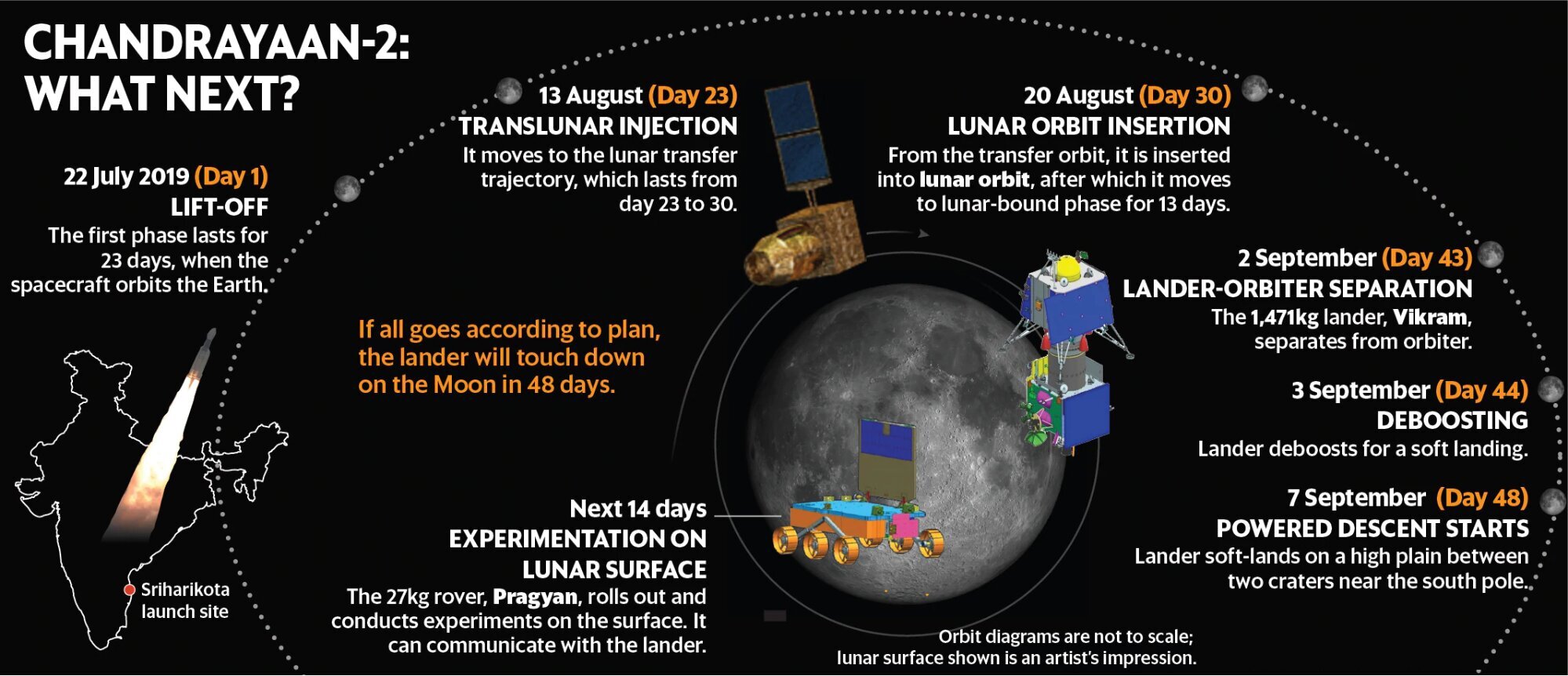Chandrayaan-2 : Launched Successfully
India’s Geosynchronous Satellite Launch Vehicle (GSLVMkIII-M1), successfully launched the Chandrayaan-2 spacecraft into the earth orbit.
- The chandrayaan-2 is now revolving round the earth with a perigee (nearest point to Earth) of 169.7 km and an apogee (farthest point to Earth) of 45,475 km.
- Chandrayaan-2 is India's second mission (after Chandrayaan-1) to the moon and comprises a fully indigenous Orbiter, Lander (Vikram) and Rover (Pragyan).
- The Rover Pragyan is housed inside Vikram lander.
- The mission aims to expand our knowledge and understanding of the origin and evolution of the Moon through a detailed study of its topography, mineralogy, surface chemical composition, thermo-physical characteristics and atmosphere.
- After Chandrayaan-2, the Indian Space Research Organisation (ISRO) has planned the launch of its solar mission, Aditya-L1, in the first half of 2020 to study the Sun’s corona.
Aditya-L1
- The satellite will be launched during 2019 – 2020 timeframe by PSLV-XL from Sriharikota.
- Aditya L-1 is a follow on mission to Aditya 1 (that was meant to observe only the solar corona). It will provide observations of the sun's photosphere (soft and hard X-ray), chromosphere (Ultra Violet ) and corona (Visible and Near infrared rays).
